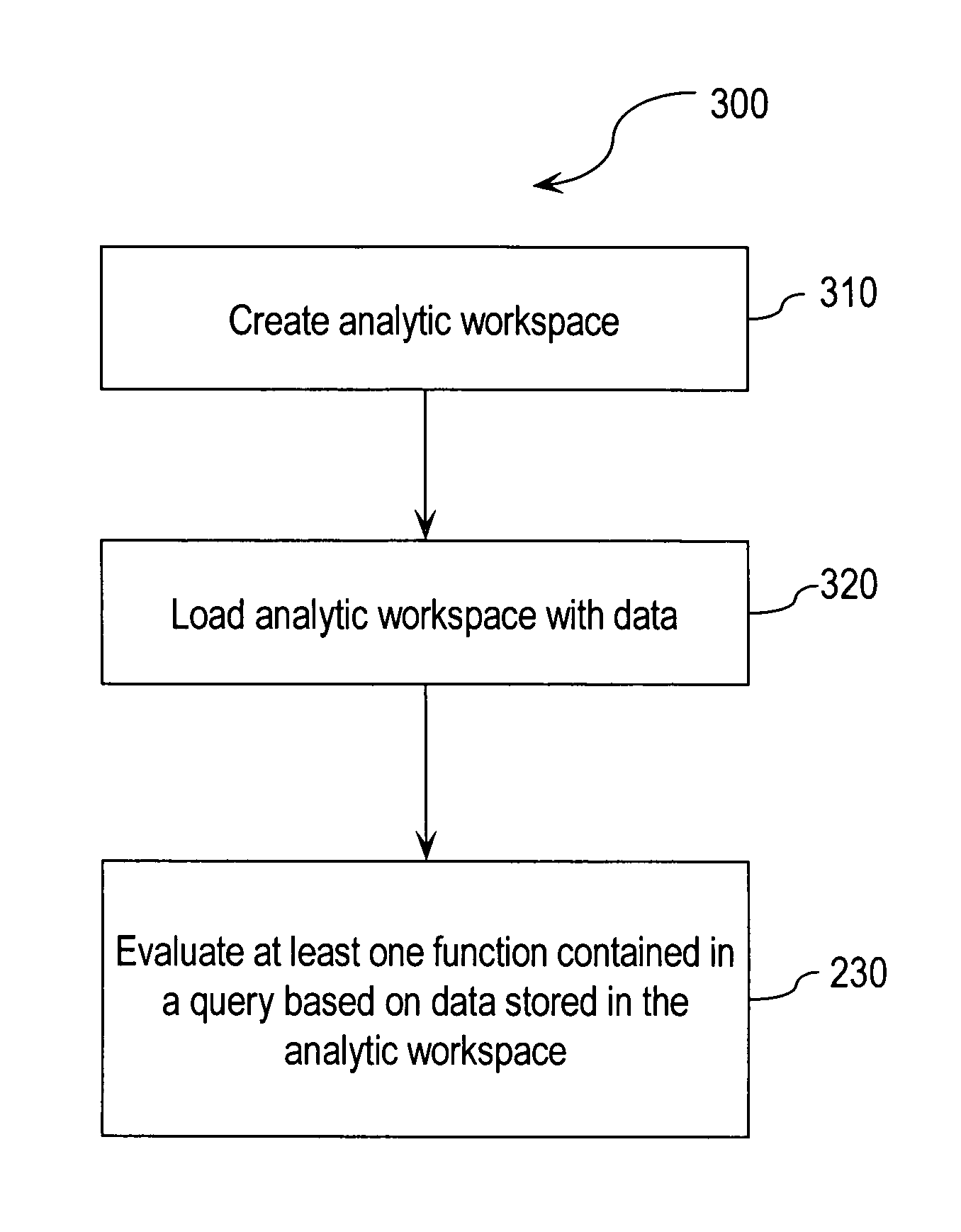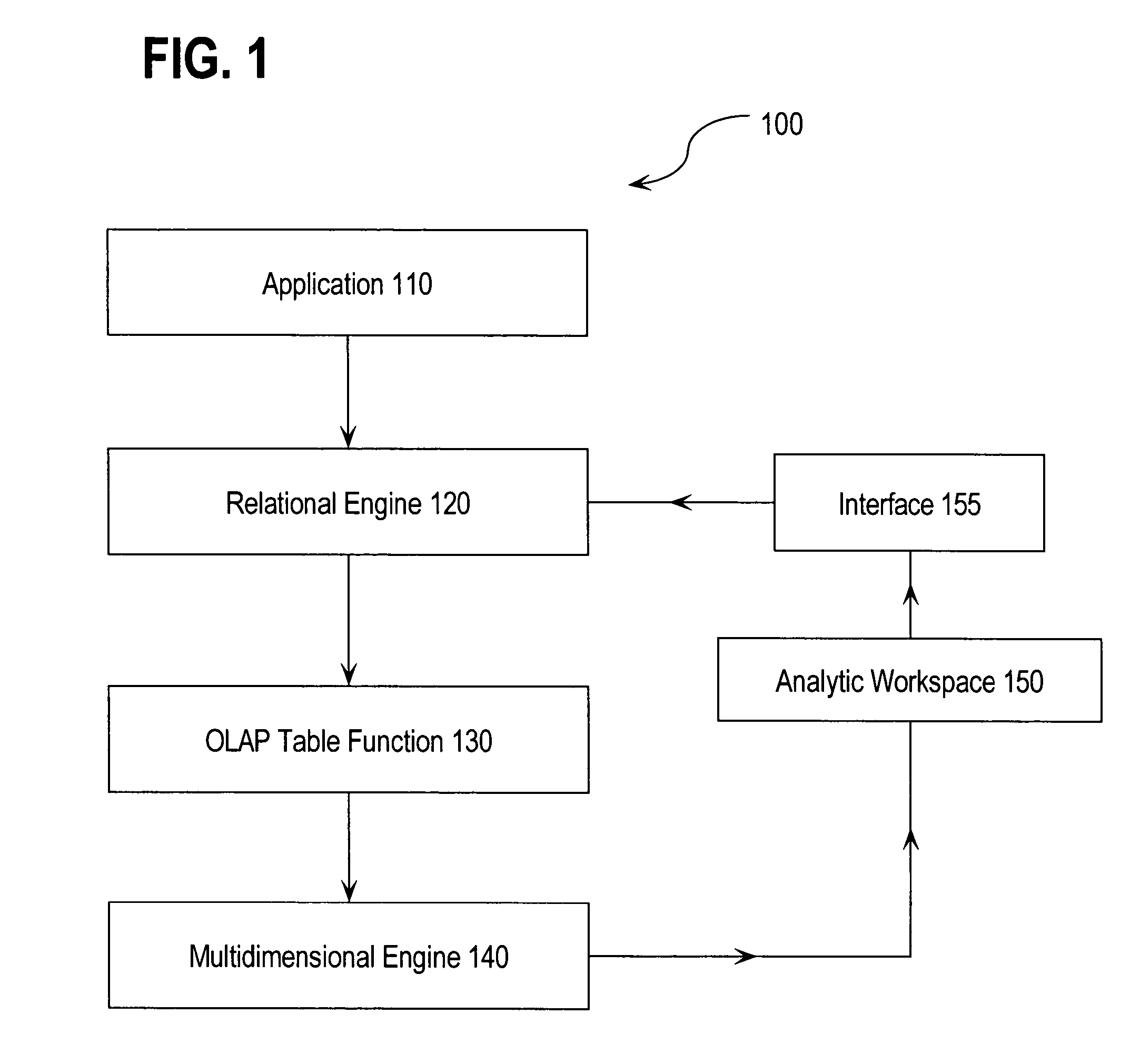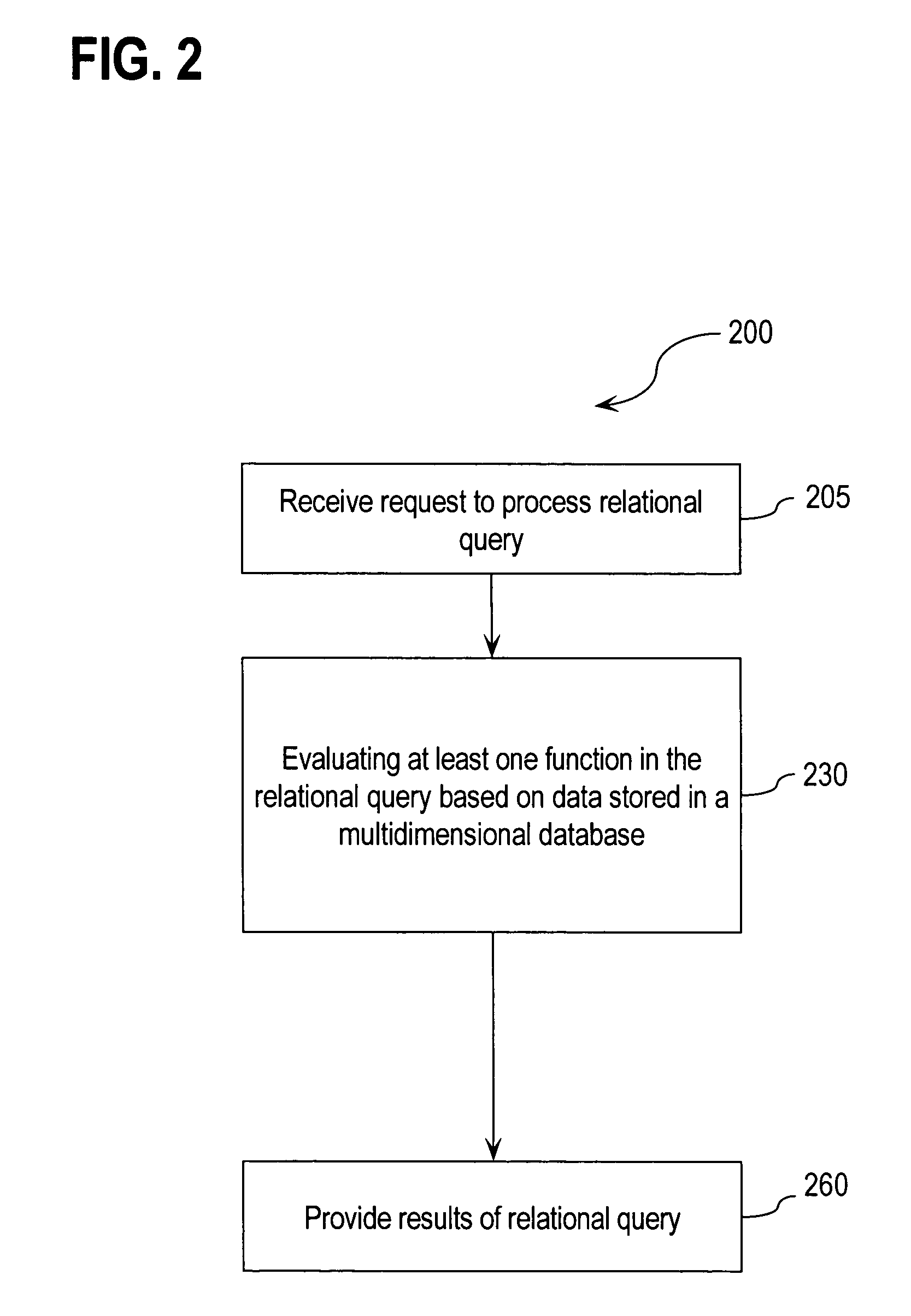Using multidimensional access as surrogate for run-time hash table
a multi-dimensional database and run-time hash technology, applied in the field of computer systems, can solve the problems of two disparate systems not being truly integrated, prior approaches that do not provide efficient large-scale analytical processing of transactions on relationally stored data, prior approaches that do not provide the ability to efficiently handle multi-session what-if analysis transactions
- Summary
- Abstract
- Description
- Claims
- Application Information
AI Technical Summary
Benefits of technology
Problems solved by technology
Method used
Image
Examples
Embodiment Construction
[0028]In the following description, for the purposes of explanation, numerous specific details are set forth in order to provide a thorough understanding of the present invention. It will be apparent, however, that the present invention may be practiced without these specific details. In other instances, well-known structures and devices are shown in block diagram form in order to avoid unnecessarily obscuring the present invention.
Functional Overview
[0029]Approaches are disclosed for using a multidimensional database as a surrogate for a run-time hash table in the context of processing a relational query.
[0030]In one embodiment, an approach is disclosed that employs an analytic workspace to store the data that is subject to a relational query, wherein the data is to be evaluated using one or more functions, such as a MODEL function. Such data is referred to herein as “model data”.
[0031]An analytic workspace is a storage type that provides multidimensional structures that are compat...
PUM
 Login to View More
Login to View More Abstract
Description
Claims
Application Information
 Login to View More
Login to View More - R&D
- Intellectual Property
- Life Sciences
- Materials
- Tech Scout
- Unparalleled Data Quality
- Higher Quality Content
- 60% Fewer Hallucinations
Browse by: Latest US Patents, China's latest patents, Technical Efficacy Thesaurus, Application Domain, Technology Topic, Popular Technical Reports.
© 2025 PatSnap. All rights reserved.Legal|Privacy policy|Modern Slavery Act Transparency Statement|Sitemap|About US| Contact US: help@patsnap.com



